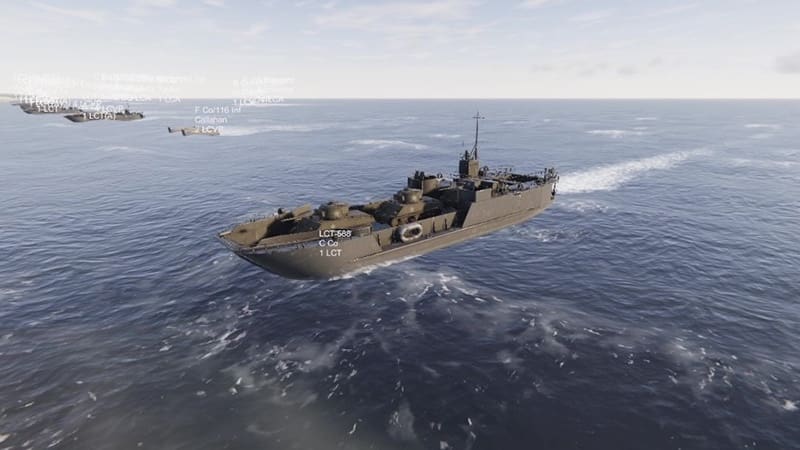WEST LAFAYETTE, Ind. – A new and modern approach to understanding battlefield history may soon help prepare future military leaders in the U.S.
Purdue University innovators have developed battlefield simulation technology that they used to produce a virtual reality tour of the D-Day beaches in Normandy, France.
“We have worked with military education partners to refine our virtual reality technology to provide a useful tool for future military leaders,” said Sorin Adam Matei, a professor of communication and associate dean in Purdue’s College of Liberal Arts. “We apply what we know from the field of physics and treat the virtual soldiers almost like liquids that are interacting on the battlefield. Military educators can use this tool to teach future leaders lessons learned from historic battles in a visually exciting way that brings them to life for the students.”
Their work is part of the FORCES (4S) – Strategy, Security and Social Systems Initiative in Purdue’s College of Liberal Arts. More information is available at purdue.university/forces.
The initiative supports the use of social scientific research in strategy and security activities to shape long-range and global military, political and organizational decision-making for a just, stable and secure world. Other members of the team are Jonathan Poggie, a professor of engineering; Robert Kirchubel, an educator and retired Army lieutenant colonel; and Matthew Konkoly, a research assistant.
The team at FORCES is working to bring the project to partners at the U.S. Air Force Air War College, located at Maxwell Air Force Base in Montgomery, Alabama. Each spring, the Air War College holds an annual Grand Strategy Seminar, usually traveling to Normandy as part of the curriculum.
“We’re exploring a new approach to group behavior that has the potential to significantly change wargaming and crisis management,” Poggie said. “I’m enthusiastic about bringing to bear some of the techniques we’ve developed in aerodynamics and high-performance computing on military decision making.”

Purdue University innovators have developed battlefield simulation technology that they used to produce a virtual reality tour of the D-Day beaches in Normandy, France. (Image provided)
The FORCES team also is working on a battlefield simulation of the Civil War battle of Gettysburg. They have formed a startup called FORCES Inc. to help commercialize the technology.
“A key aspect is creating and sharing new ways to teach military history, plus to further study and understanding of the military arts and sciences,” Kirchubel said. “I’m most excited about the project’s potential: to turn the clock back, yet display a famous battle in a technologically leading-edge fashion in order to bring military history alive to a new generation of students and scholars.”
The team worked with the Purdue Research Foundation Office of Technology Commercialization to patent this technology.
The researchers are looking for partners to continue developing their technology. For more information on licensing and other opportunities, contact Matt Halladay at OTC at mrhalladay@prf.org.

